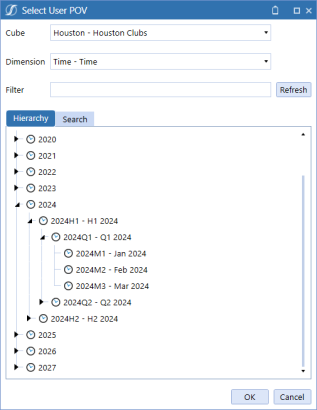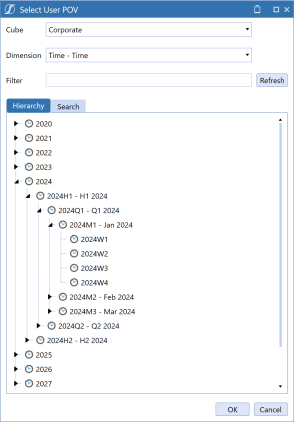The time dimension includes year and period and determines whether data is stored at a weekly, monthly, or 12/13 period frequency. The number of months and weeks in a quarter can also be set.
Example: The 445 calendar divides a year into four quarters of 13 weeks, each grouped into two 4-week months and one 5-week month. The longer month may be set as the first (5-4-4), second (4-5-4), or third (4-4-5) unit. This drives the time hierarchy that displays in the point of view.
NOTE: Weeks will only appear in applications setup as weekly.
When considering the time dimension, remember:
-
Time dimension members are customized before an application is created and cannot be altered after.
-
A new application must be created if a different time dimension is needed later.
-
There are separate data tables for each year.
-
The time dimension is not viewable in the Dimension Library because it is not editable. You can view the dimension using the Point of View pane.

See Time Dimensions in System Tools.
Time Dimension Hierarchy
Members are organized in a way where the descendants of a year include members for periods, including:
-
Half-years
-
Quarters
-
Months
-
Weeks
The time hierarchy is not tied to a calendar year. It can be configured to fiscal year by using the fiscal year and Month1 (M1), Month2 (M2), and so on to designate the time frame.
|
Monthly Example |
Weekly Example |
|
|---|---|---|
|
|
|
NOTE: Corporations that do calendar reporting and fiscal year reporting in the same application can run into issues with rolling retained earnings and beginning balances. For example, if a large corporation had two companies using different reporting years, the books must be separate because each company uses a different method. In these instance, two applications, one for each reporting year, would need to be used.




